Key Takeaways from Industry Talk with Megan Staake: Insights for Strategic Design Students
November 5, 2025
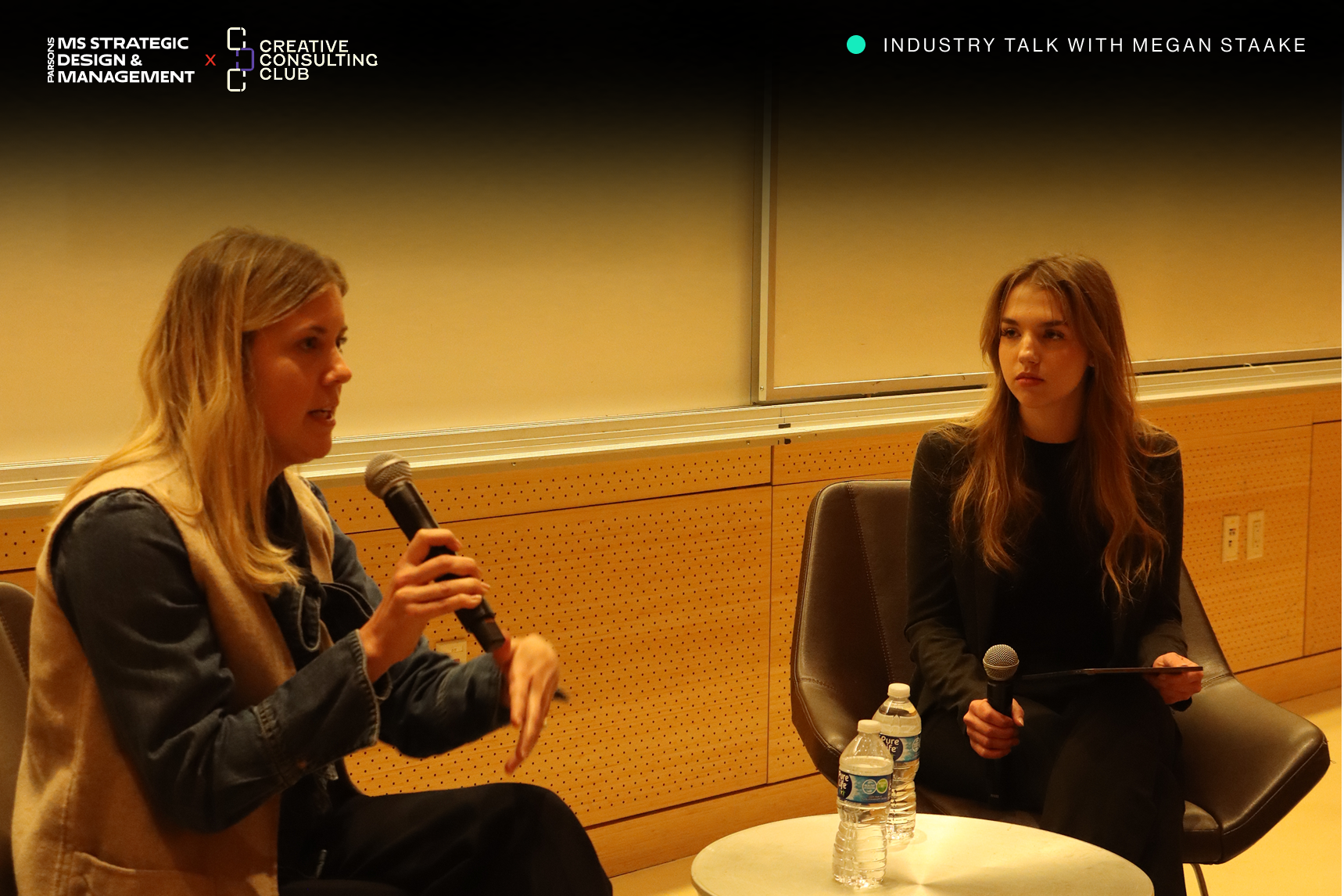
In conversation Megan Staake (Principal, BCGX/Alumni/ Former Adjunct Faculty), Moderated by Jarmila Skáre ( Founder & Head of Creative Consulting Club)
The conversation with Megan Staake, a Principal at Boston Consulting Group’s design and technology division, offers valuable insights into the practical application of strategic design in enterprise environments. Her journey from graduate school to leading complex product development initiatives provides a roadmap for students navigating the intersection of design thinking, business strategy, and technological implementation.
Understanding Strategic Design in Practice
Strategic design extends far beyond the conceptual frameworks taught in academic settings. Megan’s experience reveals that successful strategic design requires thinking about scalability from the very beginning, not just creating compelling prototypes or minimum viable products. The difference between academic exercises and enterprise implementation lies in the infrastructure required to support solutions at scale.
When developing products for large organizations, designers must account for regulatory requirements, operational capabilities, and organizational buy-in. For instance, when creating an insurance product, the team had to navigate fifty different state regulatory frameworks while simultaneously defining both the visionary end-state and the practical pilot program. This dual approach—zooming in on immediate implementation details while maintaining sight of the long-term vision—distinguishes professional strategic design work from purely conceptual projects.
The motorcycle crash detection project illustrates another crucial reality: even brilliant, well-received ideas must find their place within existing organizational structures. Commercial viability isn’t just about whether users want something; it’s about how that solution fits into broader strategic priorities, pricing models, technological debt considerations, and operational requirements like call center support. Strategic designers must expand their thinking beyond journey maps and user research to encompass these business and operational realities.
Leading Cross-Functional Teams Successfully
Product development inherently involves tension between three critical groups: design, business, and technology. Each brings different priorities and perspectives, which can create frustration but is actually necessary for effective outcomes. Design advocates for user needs, business focuses on financial viability and strategic fit, while technology considers feasibility and implementation constraints. Rather than viewing this tension as problematic, successful strategic designers learn to broker conversations between these groups and facilitate productive collaboration.
The most effective approach involves establishing clear meeting architecture from the start. This means defining touchpoints across diverse skill sets, ensuring everyone understands what assumptions and risks need to be addressed, and creating regular opportunities for cross-functional dialogue. Daily stand-ups, sprint planning sessions, and collaborative workshops prevent teams from working in isolated silos. When building the generative AI beauty assistant for L’Oreal, the team ensured data scientists and engineers participated in research sprints from day one, so they understood user needs firsthand rather than receiving directives after design work concluded.
Finding your counterpart within client organizations proves equally important. Strategic designers should identify who they’ll partner with—whether in product, marketing, or research—and establish regular connection points. This buddy system facilitates knowledge transfer, ensures continuity, and builds stronger collaborative relationships than the traditional consulting model of working in isolation and delivering finished solutions.
Navigating Enterprise Scale and Risk Management
One of strategic design’s most valuable contributions is reducing costly rework by understanding user needs upfront. When strategic design isn’t deployed early in product development, organizations often build solutions that users don’t actually want, leading to significantly higher long-term costs. This positions strategic design as a critical risk mitigation strategy, not just a user advocacy function.
Successful projects begin with explicit risk identification across all workstreams. Teams document assumptions about financial implications, customer needs, technical feasibility, and operational requirements, then systematically address these throughout the project timeline. This risk burndown approach ensures nothing critical gets overlooked and provides clear evidence of progress to stakeholders.
For large, risk-averse organizations, providing extraordinary detail in both vision and implementation planning becomes necessary. Executives need to see that teams have considered edge cases, regulatory requirements, and integration challenges before committing resources. This level of thoroughness may feel excessive compared to academic projects, but it’s essential for securing buy-in in enterprise contexts.
Essential Skills and Methodologies
The qualitative research methods learned in strategic design programs—ethnographic interviews, ride-alongs, diary studies, journey mapping, and service blueprints—form the foundation of professional practice. These tools get deployed regularly in consulting contexts, particularly because many large organizations struggle with internal silos and lack regular cross-functional communication. Workshops that bring different teams together to synthesize research or ideate solutions prove especially valuable for breaking down organizational barriers.
However, students should also develop familiarity with quantitative research methods. While qualitative research reveals the “why” behind user behaviors, quantitative studies provide the statistical significance that gives executives confidence to deploy solutions at scale. Understanding different study types—surveys, conjoint analysis, segmentation research—and when each is appropriate allows strategic designers to work effectively with research specialists or third-party agencies.
The ability to communicate at multiple levels represents perhaps the most challenging skill to master. Strategic designers must be able to go extraordinarily deep in their research and analysis while also distilling findings into simple, compelling narratives. Executives often have mere minutes to engage with recommendations, so presenting complex insights in clear, concise language while maintaining depth of supporting evidence is crucial. This means developing what one might call “zooming” skills—the capacity to seamlessly move between high-level synthesis and detailed justification.
Preparing for an AI-Integrated Future
Understanding artificial intelligence technologies has become table stakes for strategic designers, but the level of expertise required is more nuanced than many students assume. Basic familiarity with how these tools work, their capabilities and limitations, and hands-on experimentation provides sufficient foundation. Organizations typically provide ongoing training as technologies evolve, and many clients themselves are still learning, so baseline knowledge combined with demonstrated curiosity and experimentation often suffices.
Currently, generative AI serves strategic designers most effectively for reducing toil—the tedious tasks nobody enjoys. Creating interview schedules, drafting research plans, summarizing findings, and reformatting presentations all benefit from AI assistance, but human oversight and refinement remain essential. The technology provides helpful starting points rather than finished deliverables. Attempts to use AI for conducting qualitative interviews have proven unsuccessful because people quickly recognize they’re not speaking with humans and become less willing to open up, which defeats the purpose of in-depth conversation.
Students should actively explore AI tools through academic projects, understanding that this experimentation demonstrates valuable adaptability. Organizations look for evidence that candidates have practical experience with emerging technologies, even in educational contexts. However, critical thinking about appropriate use cases and limitations matters as much as technical facility. The L’Oreal beauty assistant project required careful consideration of conversational boundaries and safeguards to prevent potentially harmful interactions—illustrating that ethical considerations must be built into AI implementations from the beginning.
Building Your Professional Foundation
When entering the job market, students should focus on demonstrating building experience. Whether through physical prototyping, digital product development, or collaborative projects, showing that you’ve created tangible solutions matters more than the scale of those efforts. Organizations need to confidently tell clients that their teams have relevant experience, so any evidence of hands-on product development—from startups to academic projects to design center work—strengthens your candidacy.
The challenge of translating strategic design skills into traditional job descriptions shouldn’t discourage you. Many organizations now recognize the value of customer-centric, design-informed approaches but structure these roles within marketing, product management, or research and development rather than using “strategic design” terminology explicitly. Learning to map your skills to different organizational contexts and speaking the language of various business functions helps you identify opportunities that might not obviously appear design-related.
Creating forcing functions for yourself builds the skill of rapid synthesis. Periodically stop during research projects and ask what you would say if you had to present findings immediately. This practice develops the ability to identify the most important insights and articulate them concisely—a crucial professional skill that doesn’t come naturally to many designers who prefer gathering more data before drawing conclusions.
The Path Forward
The field of strategic design continues expanding beyond specialized consulting into broader organizational adoption. More companies recognize that understanding customer needs and incorporating design thinking improves outcomes and even increases shareholder returns. While this creates opportunities, it also requires flexibility in how you search for roles and present your capabilities. Work-life balance in consulting presents real challenges, but the opportunity to work intensively with teams on creating new solutions also generates memorable, fulfilling experiences. Understanding this trade-off helps you make informed career decisions rather than encountering surprises later. Similarly, recognizing that entry-level roles involve significant travel, meeting-heavy days, and varying levels of client engagement allows you to prepare appropriately.
The most successful strategic designers combine deep research and analysis capabilities with the ability to communicate simply and compellingly. They understand organizational dynamics, can facilitate productive tension between different functional areas, and think simultaneously about user needs, business viability, and technical feasibility. They also remain ethically grounded, ensuring that convenience and profit don’t override considerations of potential harm.
As you complete your strategic design education, focus on building diverse portfolios that demonstrate problem-solving through creation. Develop both qualitative and quantitative research literacy. Practice synthesizing complex findings into clear narratives. Experiment with emerging technologies while maintaining critical perspective on their appropriate uses. Most importantly, remember that the tools and methods you’re learning have genuine, regular application in professional contexts—they’re not merely academic exercises but practical capabilities that organizations increasingly value and need.
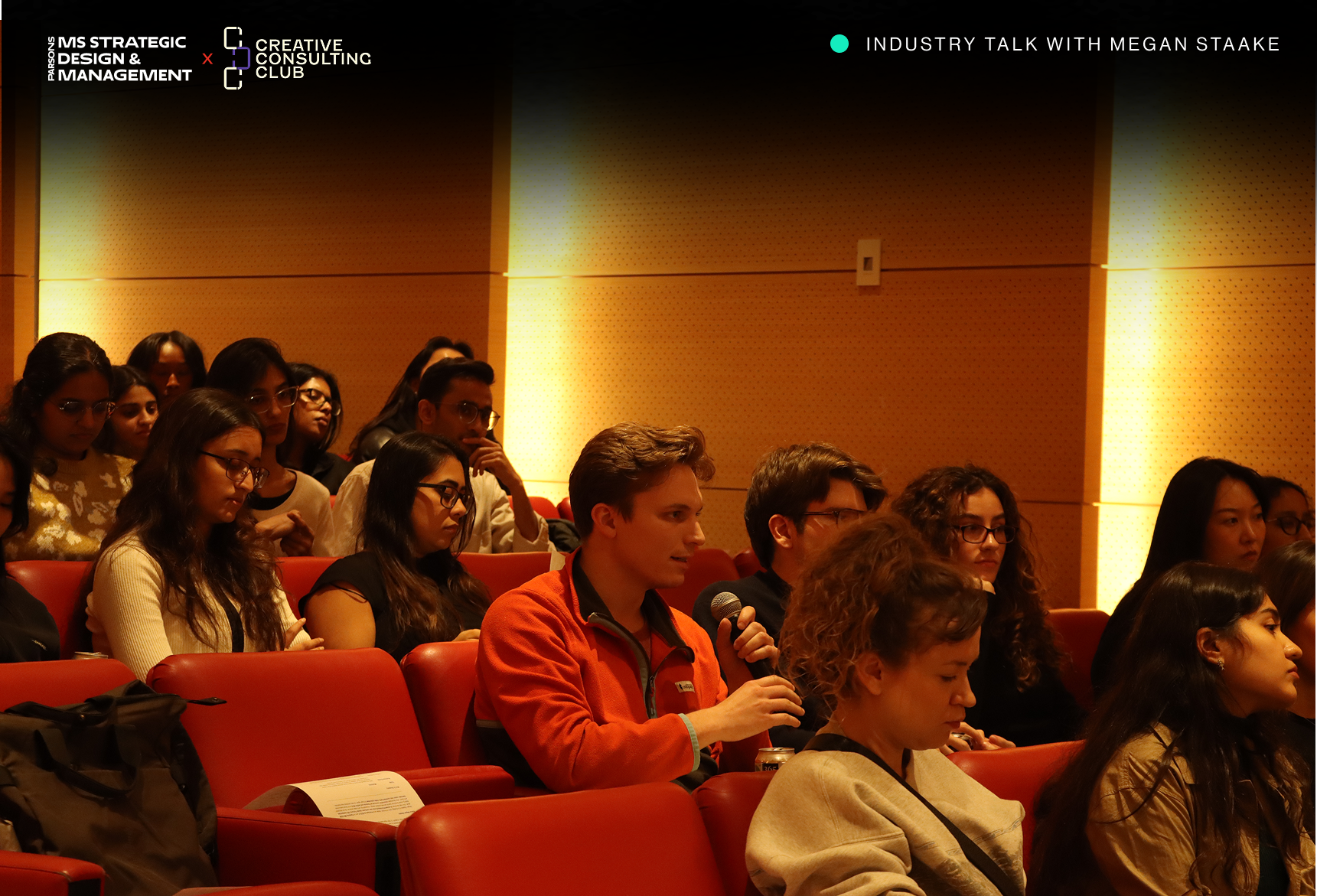
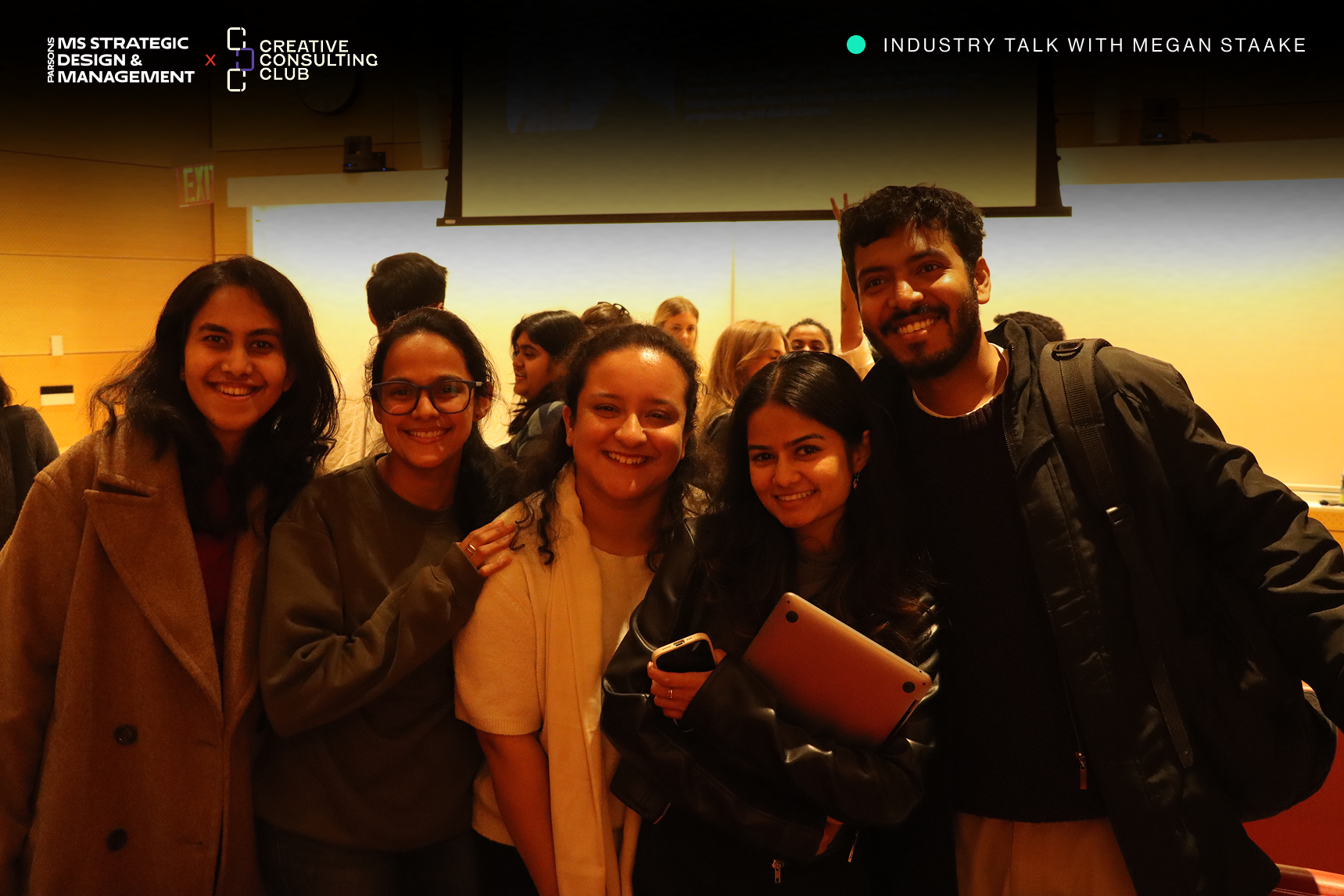
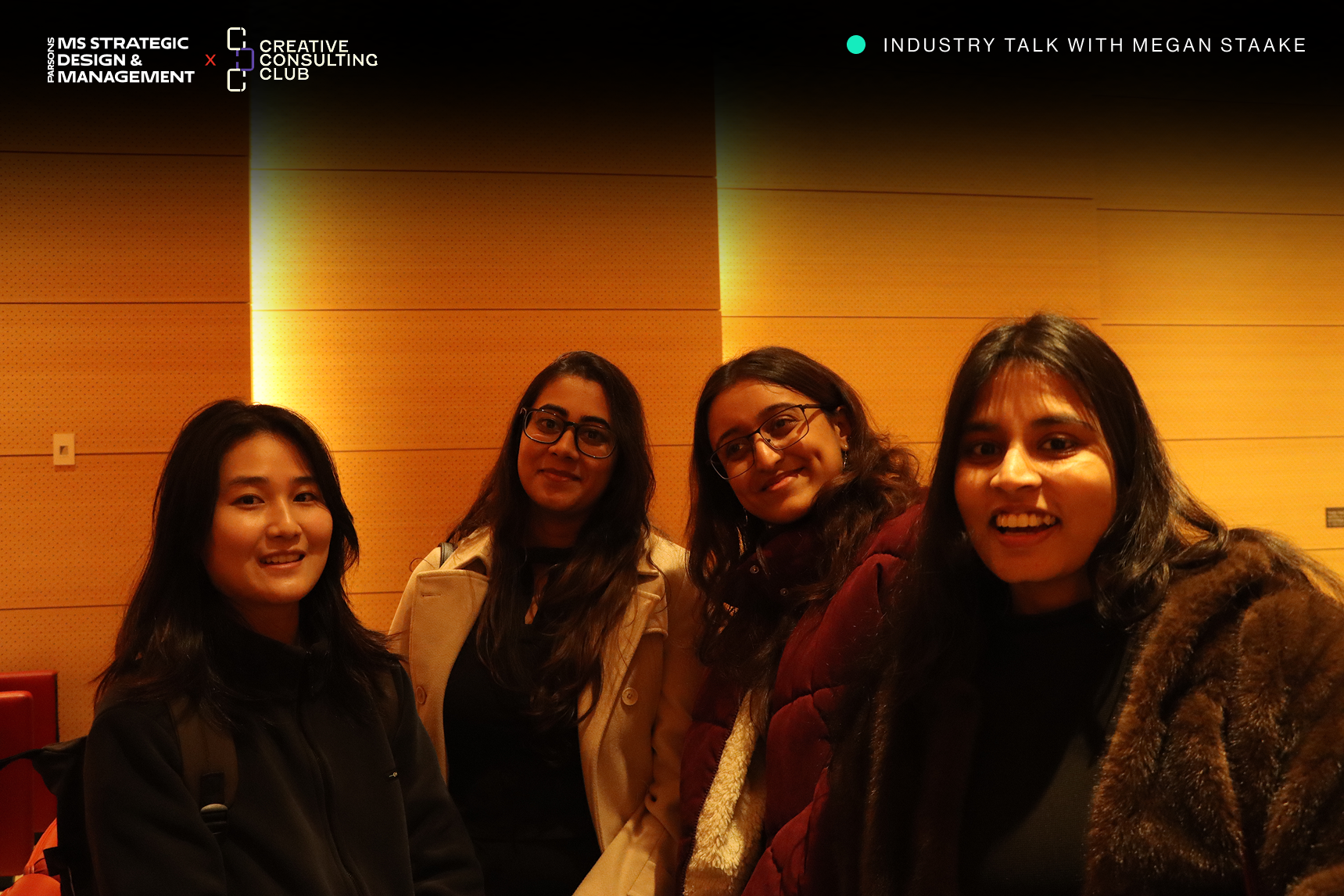
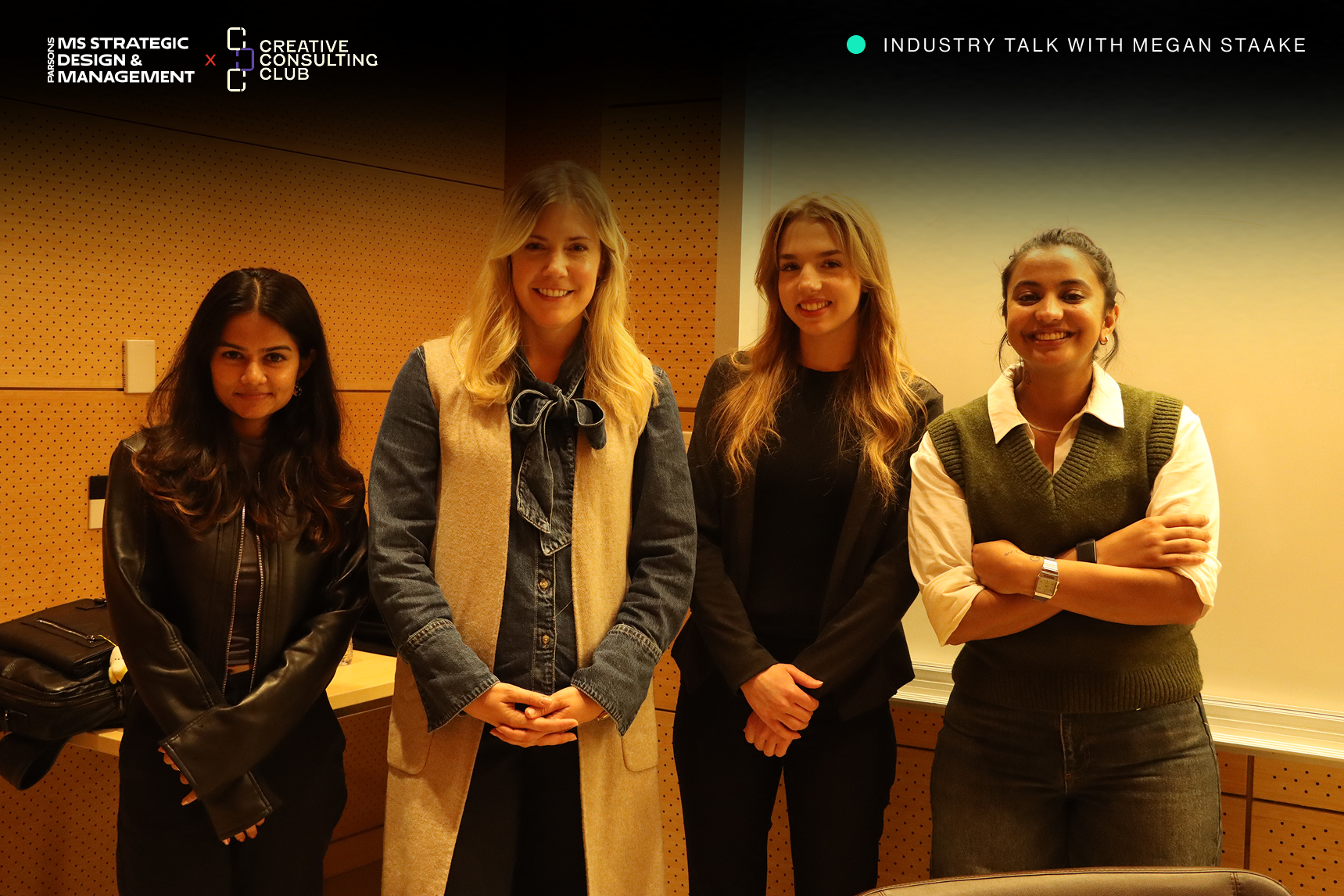
Hosted by MS SDM in collaboration with Creative Consulting Club
Thank you for joining us at the event 🙂 See you in the next one (Spring ’26).